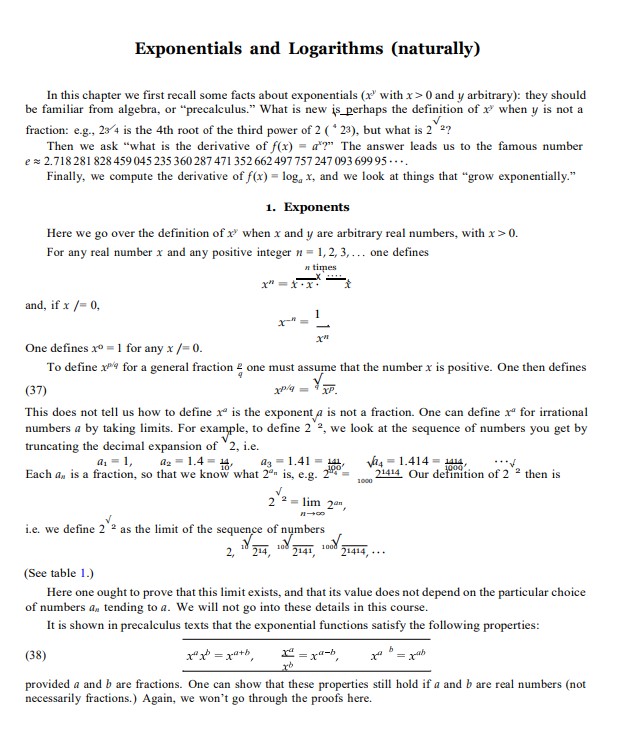Exponentials and Logarithms
Summary:
This passage explores key concepts related to exponentials and logarithms. It begins by recalling the basic properties of exponentials and introduces their definition for fractions and irrational numbers. The derivative of the function f(x) = a^x is discussed, leading to the introduction of the important number e ≈ 2.718. The derivative of the logarithmic function f(x) = log_a(x) is computed, highlighting its relationship with exponentials. Properties of logarithms are explained, including their inverse nature to exponentials and the conditions for their validity. The passage covers limits involving exponentials and logarithms, presenting theorems and examples to illustrate their behaviours. Exponential growth and decay are also examined, emphasising the concepts of half-life and doubling time. The passage concludes by offering exercises to practice further and apply the concepts discussed. Throughout, it provides a comprehensive overview of these mathematical concepts and their interconnections, enabling a deeper understanding of exponentials and logarithms.
In summary, this Exponentials and Logarithms note serves to refresh our understanding of exponentials, delve into their less conventional definitions, uncover the derivative of exponential functions, introduce the value of e, explore the derivative of logarithmic functions, and investigate exponential growth patterns
Excerpt:
Exponentials and Logarithms
……
323. After 3 days, a sample of radon-222 decayed to 58% of its original amount.
(a) What is the half-life of radon-222?
(b) How long would it take the sample to decay to 10% of its original amount?
324. Polonium-210 has a half-life of 140 days.
(a) If a sample has a mass of 200 mg, find a formula for the mass that remains after t days.
(b) Find the mass after 100 days.
(c) When will the mass be reduced to 10 mg?
(d) Sketch the graph of the mass as a function of time.
325. Current agricultural experts believe the world’s farms can feed about 10 billion people. The 1950 world
population was 2.517 billion, and the 1992 world population was 5.4 billion. When can we expect to run out of
food?


Reviews